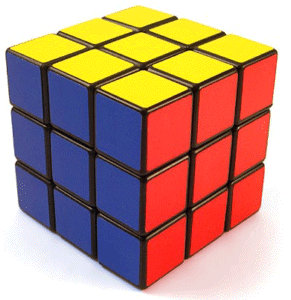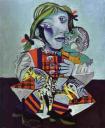
Frédéric-François Chopin
I may have heard Chopin’s Prelude No.4 a least a dozen times.
Or may have never heard it at all.
I couldn’t tell you for sure, you see.
Because there’s all this classical music playing in the background when I go to hotels. And to airports.
And I’m not paying attention.
But there was this one time I did pay attention
You see, I was listening to a presentation given by Benjamin Zander.
And Benjamin Zander didn’t just play Chopin’s Prelude No.4.
He patterned it for me (and everyone else, of course) 😉
So how did he pattern Prelude No.4?
Well he brought my attention to the composer.
And to the music he was about to play.
And then he played it.
And I went through the first phase of patterning: recognition.
I was hearing Prelude No.4 for the first time ever.
Or rather, actually listening to Prelude No.4, for the first time.
Then Msieu Zander did something magical
He repeated the music.
Over and over.
And recognition seeped into my classical-music-starved brain.
And we moved quickly to the layering
Suddenly I wasn’t just listening to the music.
I was being shown specific notes.
Why one note made me feel happy.
Why the other note made me feel sad.
Why the Prelude seems to be struggling. Almost hitting bad notes.
How the Prelude hits so-called bad notes, and then hits the note we’ve been waiting for.
How that note gives me a sense of ‘aha, finally.’
And why that 2 minute Prelude is now an integral part of me.
If I heard it on the street. Or at an airport. Or at a hotel, I’d stop.
And listen. And understand. And try to find more layering in that pattern I know so well.
And it’s only because Benjamin Zander slowed down the pattern for me.
But he only slowed down the pattern for Prelude No.4.
I’m on my own for Prelude No.5. 🙁
Note: As a result of this one presentation, I went and bought over 80 classical pieces from iTunes. All Chopin, for starters. And to date, I’ve heard the same set over 30 times in less than five weeks. I put it on each morning as I’m writing articles, and imagine I’m this great pianist. I type faster when the music speeds up. And slow down when the music slows down. My life is richer because of Benjamin Zander’s presentation. And because he took the time to slow down the pattern for me.
To see Benjamin Zander’s presentation click here.

So what is patterning?
Patterning is simply a factor of:
1) Recognition.
2) Repetition.
3) Layering.
Recognition comes first
Imagine you’re in a city you’ve never been to before. Around you are cobbled stone streets. Hey, you’re in Rome.
But you’re hopelessly lost. The summer sun has long set, and you desperately want to get back to the hotel. But you can’t figure out where you are. This situation, as you’ve already worked out is a lack of recognition.
Of course, you know what comes next
You go back to the same cobblestone area the next day. And the day after. And then suddenly, you’re not even thinking about the way back to the hotel. Ah, but you are. Your brain has worked out a temporary map. And the repetition has helped you to get back.
Layering of course, is something we don’t pay attention to, at all
But it’s layering that really makes the difference. You see, recognition and repetition are core parts of your learning. But layering takes it to another level.
The first time you were lost, you didn’t see the beautiful flowering tree
Or the green paint on the window. You didn’t see that pizza place around the corner. But now you do. Your brain is beautifully layering colour, odour, sound, texture and tons of other stuff, that you’d find impossible to explain. And in a way impossible to re-create.
How do we know that we couldn’t re-create it all?
Because if someone told you to simply draw the scene, you’d only be able to re-create some of the scene. You’d miss out on many elements. You’ll miss out that faded poster on the wall. You’ll miss the ornately carved park bench. You’ll wonder how you didn’t see the bright red post box.
And if someone were to take you on this magical mystery tour...
The tour of the faded poster. The ornately carved park bench. And the bright red post box.
Then you’d enter the first phase: Recognition.
Of course, you’d see it again and again: Repetition.
And you’d start to recognise details. Far more details would enter your brain every single time. Aha!: Layering.
Now add recognition, repetition and layering at high speed.
And you have patterning.
Patterns are why you see a chair and know it’s a chair.
Why you listen to Chopin’s Prelude No.4 you’d remember it, if it was played to you again and again.
Why you see a child, and know it’s not your child.
That’s patterning.
Which is why you could recognise the Rubik’s Cube at the top of this page.
Your brain had seen it enough times, to tell you that it was indeed not any old cube.
But a Rubik’s cube.
And if that picture wasn’t of an actual cube, but a cake designed like a Rubik’s Cube.
Or furniture. Or just about anything. You’d still recognise the pattern.
Aha, you’re a genius.
Recognise the pattern.
And you’ve cracked the code.
But there’s still more work to be done.
It’s not enough to recognise a pattern. Or to crack a code.
But let’s leave it for another post, shall we?
For now I’d love it if you had any life stories, or comments or questions.
Feel free to fill in the comments box.

Imagine you went to a friend’s house today.
You’re in your friend’s kitchen.
And you see a chair.
And you sit down on that chair.
How do you know it’s safe to sit on that chair?
But even more interestingly, how do you know it’s a chair in the first instance?
Your brain worked out the pattern, didn’t it?
It figured out, that if the chair looked like a chair, then it must be a chair.
The chair you picked may be orange, and you’ve never sat in an orange chair before, but hey the brain still sees it as a chair.
And even if the chair didn’t have four legs. Even if it had just one central beam, your brain still sees the chair as a chair.
This is the simplicity of patterning
You see the chair. You sit on it.
A five-month old baby sees it.
And slams into it. Bumps into it. Stares at it.
Isn’t sure what to do with it.
The patterns are clear in your brain. The patterns ain’t that clear in the brain of that baby.
Which brings us to why some people seem so talented
They just see patterns we don’t see (not yet, anyway!)
But here’s the really frustrating part.
If you ask a ‘talented’ person what they’re seeing, they can’t explain what’s really happening.



So if you asked the famous artist Picasso, what patterns he saw before he drew a masterpiece, he may not have been able to give you an answer. And yet, he was seeing patterns.
But patterns at such high speed that most talented people can’t tell you what they’re seeing.
These um, talented people simply draw, or sing, or dance.
They can’t describe to you the pattern (in most cases).
So how do we know it’s a pattern after all?
Because of the repetition.
Picasso’s first drawing may not look exactly like the next, but try as he may, the next drawing will have an overlap of the first.
A dancer may do a completely different dance routine, but hey, there’s the style coming through. And what is style, but a pattern?
Artists, dancers, heck even criminals follow a pattern.
But because we can’t see the pattern at normal speed, we think it’s talent.
Yes, you have a talent for spotting a chair.
Yes, you have a talent for sitting down on a chair.
But can you explain that talent to me?
No you can’t.
Because it’s happening too fast in your brain.
And that’s exactly what’s happening in the brains of so-called talented people.
But let’s do the impossible in the posts to follow, shall we?
Let’s slow down patterns so that you can see them.
Aha…now that would be something eh?
Then the so-called talent wouldn’t be so magical after all.
But how do we slow things down? That’s the question.
And yes, there’s an answer.
Amazing as it may sound, there’s a simple, logical answer.
But hey, that answer will come in another post.
For now, look around and see your magnificent brain. And how it seems to recognise patterns all the time.
You are indeed talented at recognising patterns.
But we’ll go one step further. We’ll do stuff that seems impossible.
Like draw cartoons. Or write jokes. Or do things that seem um, quite out of your current league.
Watch this space.
And feel free to ask questions. Your questions will help me. 🙂

Imagine you do a course with Psychotactics (e.g. the Article Writing Course). And you learn specific steps to write an article. Well, heck you’re copying the steps, right?
And that makes you a clone, right?
Wrong.
Well, not exactly wrong.
The chances of others perceiving you to be a clone are very high.
But you can never, ever be a clone.
You couldn’t be a clone, even if you copied everything…
Because layering comes into play.
What you’ve learned over the years somehow gets added into the mix.
Good stuff that you’ve learned. Bad stuff too.
And though you think you’re becoming a clone, you’re creating a variation.
Kids start off trying to be clones of their parents
A child copies the actions, accent of its parent. As humans we’re all wannabe-clones.
If the entire human race walked on one leg, you can be sure that our kids would learn to walk on one leg.
And yet, there’d be variations.
Which kind of takes me back to when I first started cooking.
At that point, I didn’t want to experiment at all. I’d want to be told exactly what to do, and how to do it, down to the last ingredient, and the last measure. At that point I’d be a clone–almost.
But as I grew in confidence, that cloning factor didn’t get reduced. It just layered itself on the top of other factors. And so, my ability to cook better and quicker meals continued to evolve.
And all the time, I thought I was just being a clone. But obviously, I was wrong.
Cloning is simply impossible
Because even when we’re trying to copy something in the greatest detail, we create some variation.
No matter how minute, the variation must exist.
Even an exact photocopy isn’t an exact photocopy down to the last detail.
A layer has entered the zone.
And layering is an amazing journey.
As we’re about to find out in my next post.

Do you like sushi?
Or do you hate it?
Or would you simply avoid it?
You see sushi is a common dish across the world today.
But there are people who don’t have fun around sushi.
To them, sushi is something scary, and different from steak and potatoes.
Steak and potatoes is what they love and understand.
But what’s all this sushi stuff got to do with understanding how people learn?
People learn with patterns
Talent has a direct co-relation to an understanding of patterns.
So while one person is able to learn through audio, the other person struggles.
One person is looking for ‘sushi learning’, and the other wants ‘steak and potatoes learning.’
And our world is all ‘steak and potatoes.’
Look at the Internet. Look at our schools. Look around us.
We have audio, some video, and loads of text.
What if I wanted to learn through ‘cartoons’ instead?
What if I learned ten times faster through mind-maps?
That kind of learning doesn’t exist.
So the learner runs into a mind-block.
That block prevents people from going ahead.
Suddenly, they’re told that they’re not talented.
Suddenly, they feel a bit frustrated.
Suddenly, they decide that ‘sushi’ isn’t for them at all.
But what if sushi weren’t presented as ‘sushi?‘
And presented as something else?
And they enjoyed the ‘sushi meal’, thinking it was something akin to ‘steak and potatoes?’
At that moment, their brain has recognised a taste it likes. A new pattern.
Now they’re more than likely to eat ‘sushi’, when at first they completely detested it.
The ‘sushi’ didn’t change. The method of presenting the sushi changed.
And suddenly there is an interest.
An interest that leads to desire.
Desire that leads to fancy.
Fancy that could very well lead to obsession.
But it all started with the change in the way the pattern was presented.
When the pattern changes, the behaviour changes.
And the blockages to learning, reduce. Or completely vanish into the yonder.
Which reminds me…
This post is all about words. Or ‘steak and potatoes’ learning.
Time to put in some video. And cartoons. And mind maps. And whatever I can get my hands on.
Time for some ‘sushi learning.’
P.S. I couldn’t have found a better picture to illustrate ‘sushi learning’ than that gadget above.
Sadly the product is no longer available. I guess it was too pricey at $89 for 256mb 🙂








